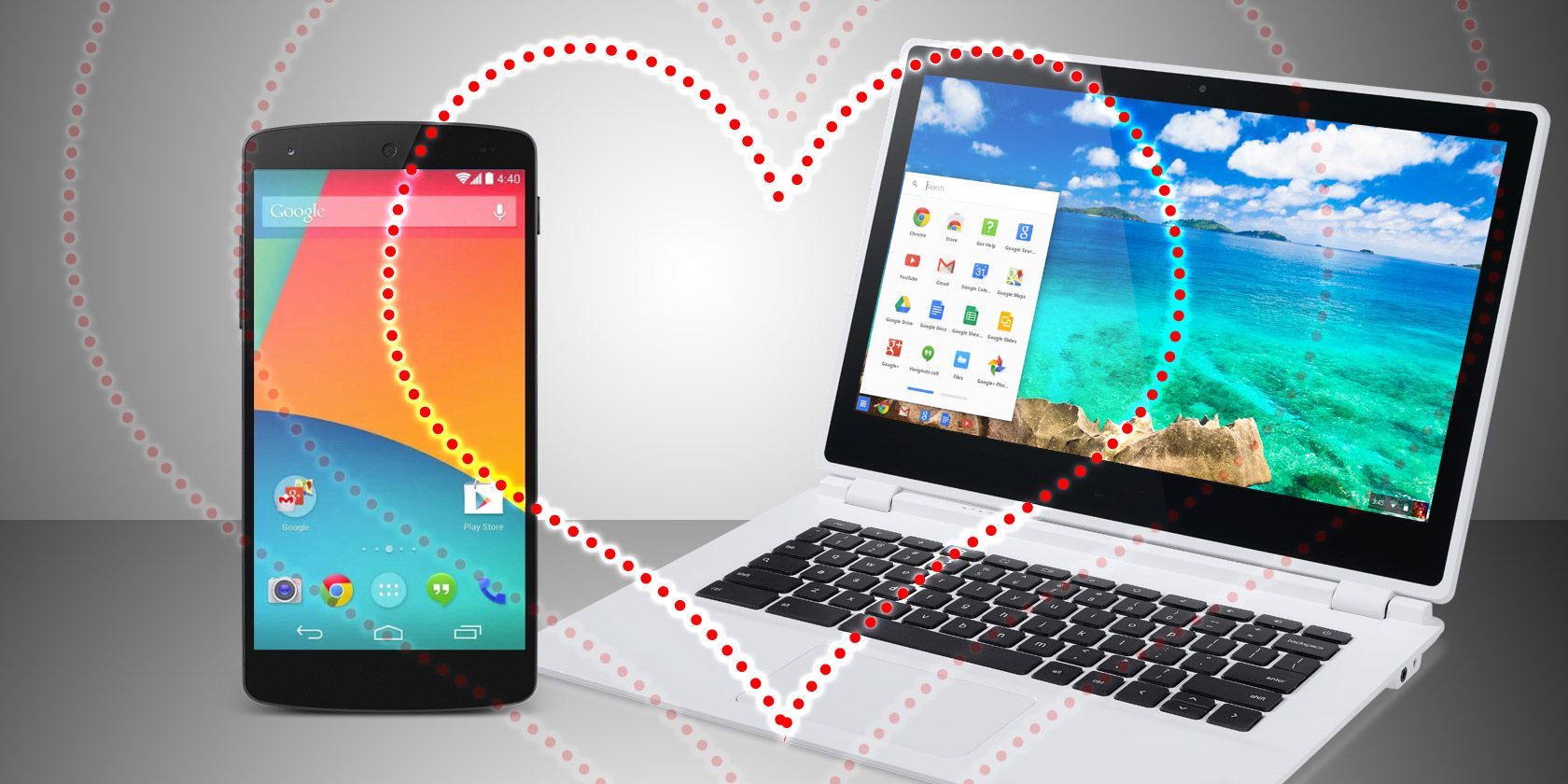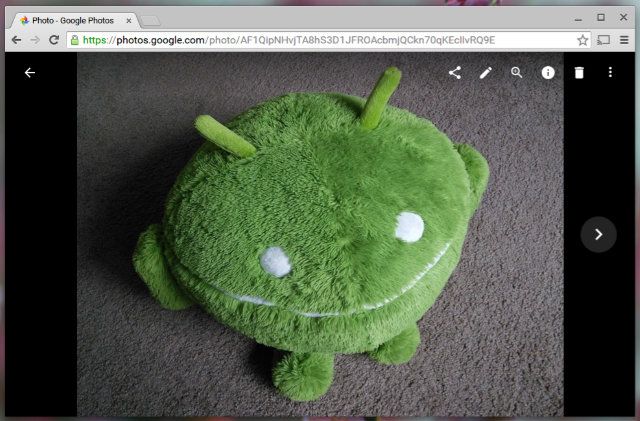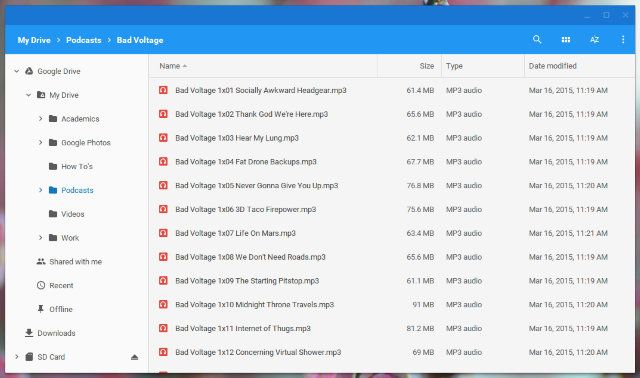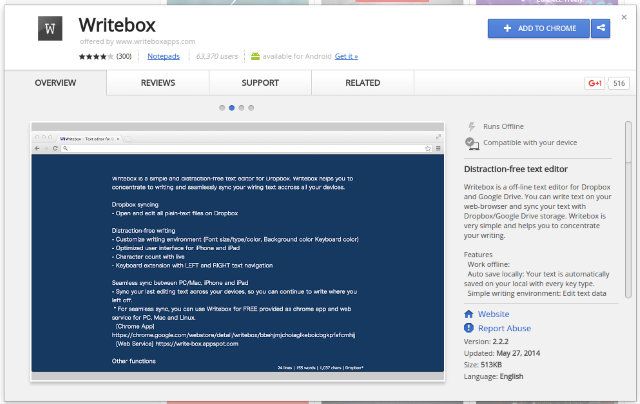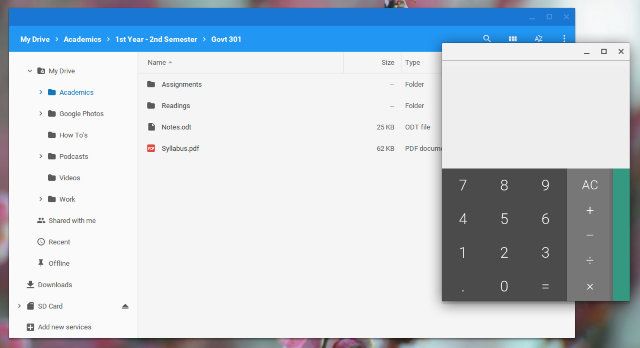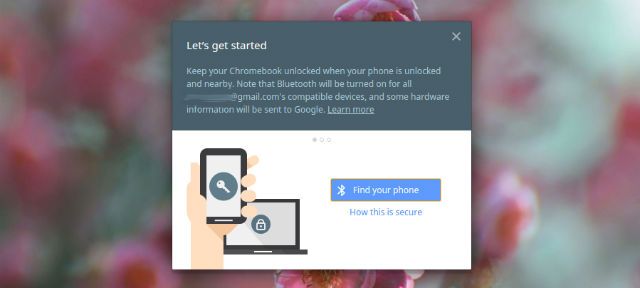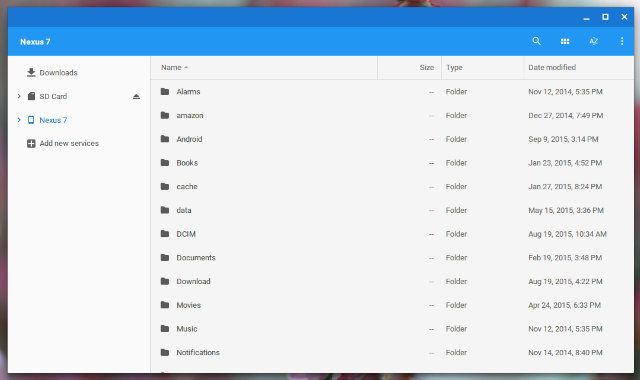Frankly, there are many reasons to consider checking out a Chromebook. But here's a big one: they're ideal companions for Android devices.
So if you're rocking an Android smartphone or tablet, you might enjoy using a Chromebook more than you think simply because of how they're built to work together.
Here are several ways Chromebooks supplement Android quite nicely.
1) Google Account Integration
When you set up an Android device or a Chromebook, what do they have in common? Both ask you to sign in with a Google account. Then they go through the process of syncing your information.
On Android, this means having your email ready when you tap the Gmail app. It means regaining access to all of the apps you may have downloaded in the past. It means seeing all of the photos you've saved to Google Photos show up within the pre-installed app. It means seeing your location history in Google Maps, your favorite videos in YouTube, and all of the files you've saved to Google Drive.
On a Chromebook, the experience is the same. Chrome signs you into Google's websites. When you open the Gmail web app, your email will be ready. When you go to Maps, you will see the places you've been. When you go to YouTube, Drive, and Google Photos, well, you'll see precisely what you see on your Android device.
Android and Chromebooks come with their own versions of the same apps pre-installed, and out of the box, both will push you towards using the same Google services. If you do, you're going to find your information similarly presented and easily accessible on whichever device you use.
2) Android Apps in the Chrome Web Store
Several different kinds of software populate the Chrome Web Store. The oldest are extensions. These expand what Chrome can do, and there are no shortage of great ones to recommend. Another common form is the Web app, which is essentially a glorified bookmark that links you to a website.
Then there are apps that were designed and packaged to run specifically in Chrome. These tend to run offline and offer functionality more similar to what people expect when they think of the word "app".
Then there are apps that were designed to run on Android and have been packaged to run inside Chrome OS as well, with the same code at the core. See the Chrome Web Store list of re-packaged Android apps.
Many apps have been packaged for both Chrome and Android separately, which is not quite the same as above, but useful to know if you want to use that app on both devices and keep your information synced. These apps often look and work largely the same as they do on your phone or tablet. Just look for the "Available for Android" label at the top of the screen.
3) Material Design
Before releasing Android 5.0, also known as Lollipop, Google unveiled a new set of visual interface guidelines that it referred to as Material Design. Android served as a showcase of this vision, with Google gradually updating its apps to meet this new standard. It has also worked on adapting its websites as well.
Going forward, we're starting to see more elements of Material Design work their way into Chrome OS. Some changes are already in development that will make Chrome look visually similar regardless of whether you open it on Android or in a Chromebook.
If you get used to Google's design language on one platform, using a laptop with a similar look and feel could potentially save you some headache down the line.
4) Cross-Platform Integration and Features
Android and Chrome OS's similarities don't just stop at the surface. These days, Google has integrated some features on both platforms at the same time. When it rolled out the Chromecast, you could install a Chrome extension for casting just as the Cast icon started popping up inside Android apps.
When Lollipop introduced the ability to automatically unlock your phone or tablet when it's paired to an Android Wear watch or any other Bluetooth connection, Smart Lock appeared on Chromebooks as well, letting you skip entering your password if your phone was nearby.
5) Easy File Transfer
Do you want to transfer a file from your phone to your Chromebook? What about the other way around? Pull out a USB cable and plug in your Android device. You will see it pop up inside Chrome OS's file manager as removable storage, and you will have access to the full directory of folders you can browse on a non-rooted device.
There are many ways to transfer files between mobile devices and PCs, but it doesn't get much easier than this. And unlike on Windows, you don't have to deal with installing drivers beforehand. The process of transferring files from Android to Mac is even more complicated.
If your phone or tablet still has a microSD card slot, you can also pop that out and stick it in your Chromebook. Some come with microSD slots, while others require a full-sized adapter. Since both Android and Chrome OS are based on Linux, folders should appear the same, and you don't have to worry about programs creating junk files all over the place.
6) Excellent Battery Life
An interesting phenomenon is occurring right now. Laptops are lasting longer throughout the day, while smartphones are crapping out faster. Today's high-end flagship phones tend to come with huge, pixel-crammed displays with higher screen resolutions than most PCs. They're also powered by mobile processors that can make light work of demanding mobile games.
Batteries continue to get bigger, sure, but most of time that increased size is required just to make sure this high performing tech can make it through most of the day.
Meanwhile, laptops are no longer limited to 3-5 hours, and this isn't just with Chrome OS. MacBooks can easily carry you through a workday, and it's not as hard to find a Windows machine that can last through a cross-country flight as it used to be.
Chromebooks, however, don't require much processing power, and they tend to be cheap. You'll often get better battery life for less money, and don't be too surprised if you start getting more screen-on time from a cheap Chromebook than your phone.
What Is Your Laptop of Choice?
Much of what you find in Chrome OS you can also find in the version of Chrome available for Windows, Mac, and Linux. Naturally, Google wants Android and Chrome to be accessible to the largest number of people as possible. And yes, there are some things you can do on these operating systems that you can't easily do on a Chromebook, such as connect to a phone or tablet over ADB.
However, each of these operating systems will try to pull you in other directions. Microsoft designs Windows to lure you into its ecosystem. Apple does an even better job of locking you in on Macs.
Most Linux distributions don't have this particular kind of corporate influence, but Chrome OS (itself a Linux distribution) comes ready to integrate with your Google account from the moment you turn it on. And we can only expect Chromebooks and Android to become further integrated in the years ahead.
Do you own an Android phone or tablet? Have you ever used a Chromebook? In what ways have you enjoyed using the two? How do you wish they could work better together? Give us your opinion in the comments below!

